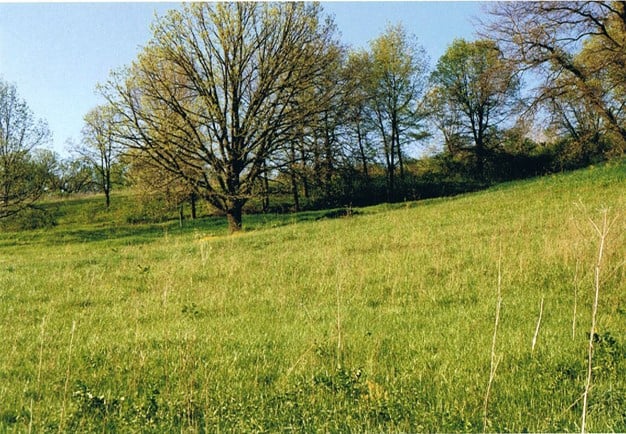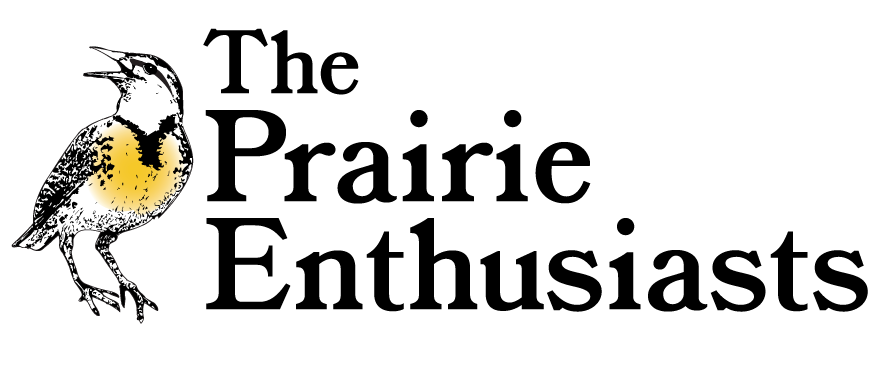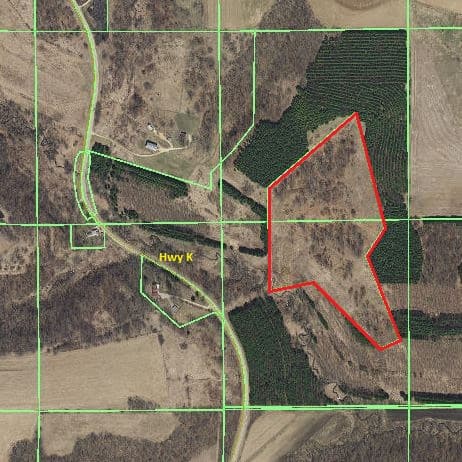
Kalscheur Oak Savanna
This 19.06 acre property harbors 212 native plant species, including a population of the rare Hill’s thistle, a Threatened Species in Wisconsin. In the southern part of the property is a cold water stream and wet meadow which rises up to meet a south facing slope of St. Peter’s sandstone covered with dry prairie and oak savanna. As you go to the highest points of the property, there is a thin cap of dolomite over the sandstone. Where the uplands meet the wetlands there is ground water discharge forming springs and perched wetlands raised several feet above the rest of the wetland habitat.
ACCESS & DIRECTIONS
The Kalscheur Oak Savanna is located on County Highway K, two miles south of the village of Hollandale in Iowa County, Wisconsin. The property is landlocked, but The Prairie Enthusiasts does have an undeveloped right-of-way which permits legal access.
Google Map
Usage Policy
Allowed:
- Outdoor Recreation
- Hunting: Wild Turkey (spring season only; no permit or reservation required)
- Hunting: White Tailed Deer (bow, crossbow, and muzzleloader season; no permit or reservation required)
- Hunting: White Tailed Deer (gun season; permit and reservation required)
- For more information visit our hunting and fishing page.
Not Allowed:
Ownership History
This site had served as a pasture for many decades. In the early 1990s, volunteers with the Southwest Wisconsin Chapter of The Prairie Enthusiasts, while surveying for remnants, discovered prairie vegetation here. They approached owner James Kalscheur about the possible purchase of the parcel. In December 1994, with kindly assistance from the Natural Land Institute and the new WI State Stewardship Grant Program, we completed the purchase. Mr. Kalscheur then generously noted cash back to The Prairie Enthusiasts for a land management endowment for the site.
In January 1996, restoration began in earnest when Southwest Wisconsin Chapter member David Lowe felled around 150 trees and fellow prairie enthusiast Ron Nieman removed all of the downed trees with his tractor and skidder. Trees removed included black cherry, slippery elm, basswood, walnut, paper birch and aspen. Some trees were processed at a saw mill and the remainder was processed into nearly 30 cords of firewood by The Prairie Enthusiasts volunteers. Since then, many additional hours have been spent clearing small trees and shrubs. In the summer of 1996, 150 purple milkweed seedlings were planted on the site. In the fall, portions of the site experienced fire for the first time in many years.
Management
Removal of woody vegetation and exotic species will remain high priorities for years to come. A carefully planned fire regimen will also be applied.

